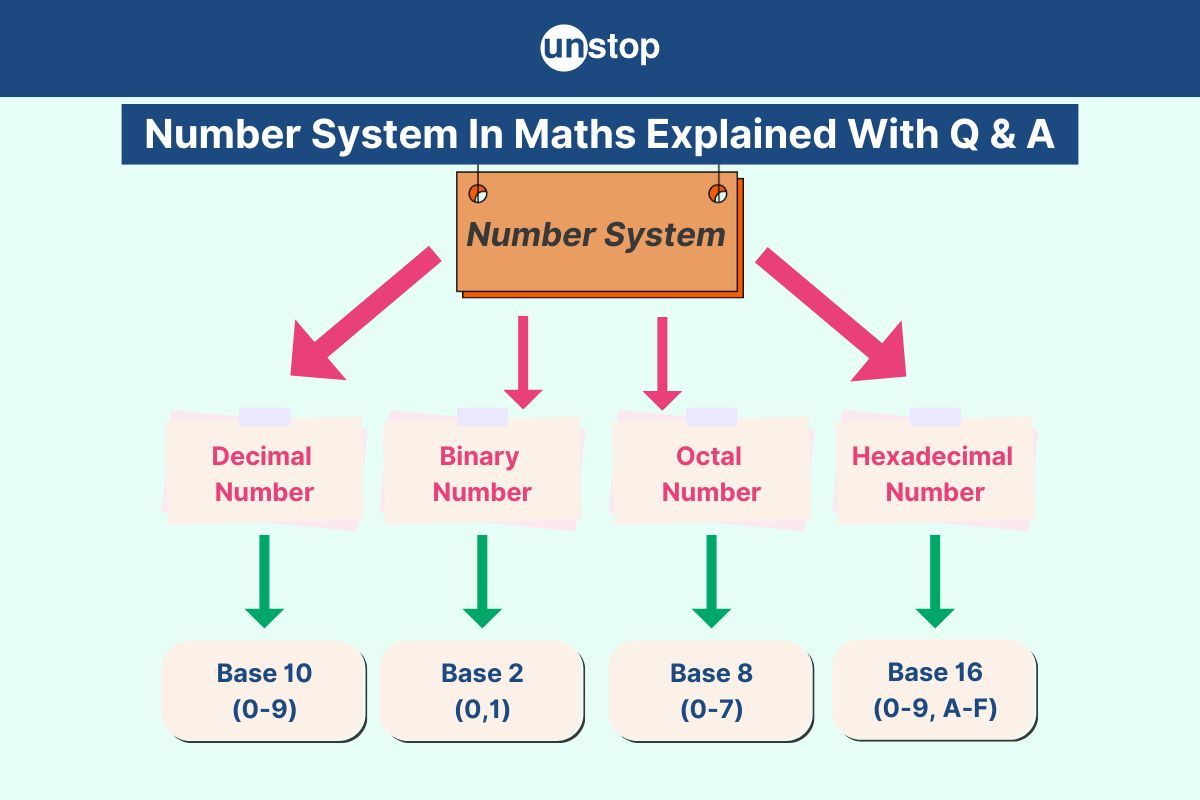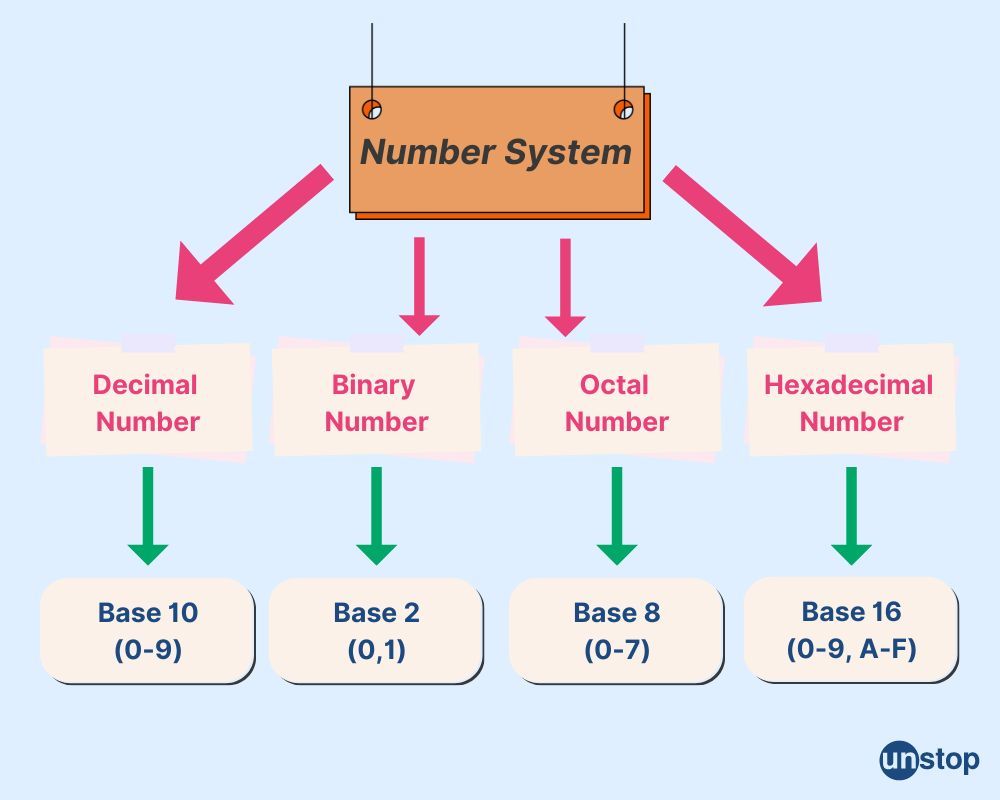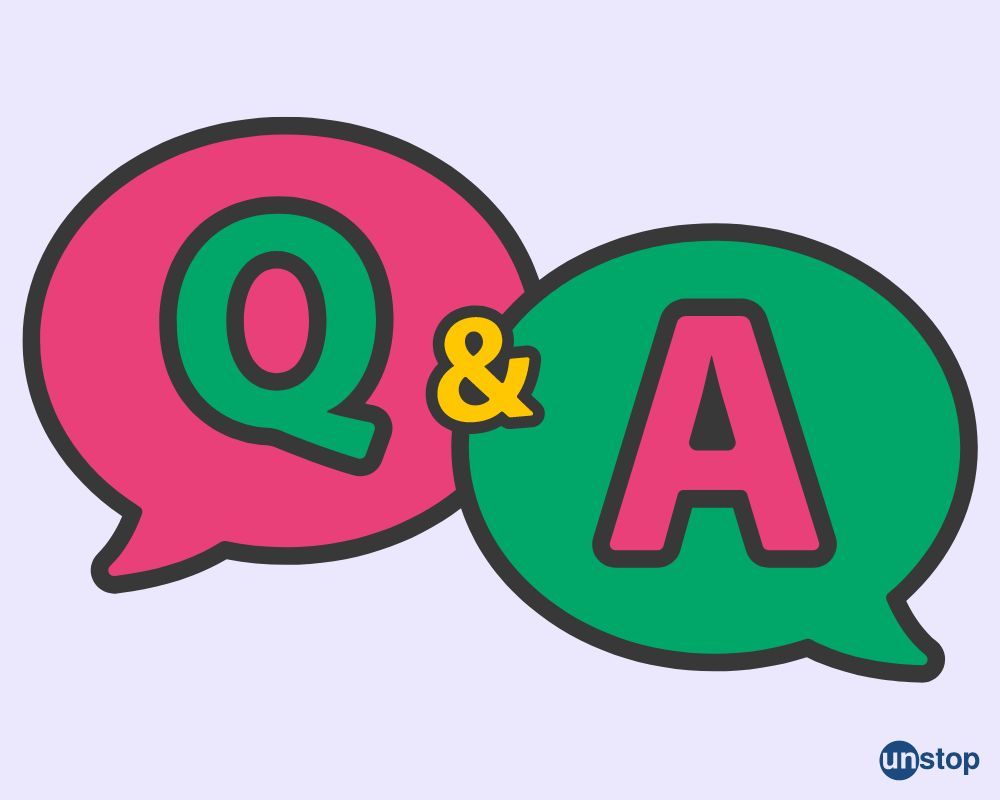- Understanding Number System
- Types Of Number Systems
- Conversion Of Number Systems
- Selected Practice Questions And Answers
- Conclusion
- Frequently Asked Questions (FAQs)
Number System In Maths- Types, Conversion, Questions And Answers

Mathematical number systems are essential for expressing numbers in different ways and are crucial for computer operations. Numbers represent values used for counting, measuring objects, and conducting math operations.
Different number systems have different properties, such as binary, octal, decimal, and hexadecimal systems.
Understanding Number System
The number system involves using symbols representing numbers on a line with rules. These symbols, called digits, range from 0 to 9. Let's understand the number system, its various types, and conversions.
The number system provides a structured way to express numbers using digits, ensuring clarity and consistency in mathematical calculations. It facilitates various arithmetic operations like addition, subtraction, multiplication, and division.

Types Of Number Systems
Let us study the types of number systems in detail:

Decimal Number System
The decimal number system is the most common and widely used number system in math. Its base value is 10, and it uses ten digits from 0 to 9. Each digit's value depends on its position within a number, with the rightmost digit representing ones, the next tens, and so forth.
In the math number system known as decimal, each digit has ten possible values from 0 to 9. For example, the number 4567 in the decimal system consists of the digits 4, 5, 6, and 7, with each digit representing a different power of 10. The value of each digit is determined by its position in the number.
Binary Number System
In the binary number system, numbers are shown using only two symbols: 0 and 1. This method serves as the foundation for all current computer systems, where each symbol's worth in a binary number is determined by multiples of 2.
When we look at the binary number 1011, it actually equals the decimal number 11. In the binary system, each digit holds a place value based on powers of 2. The rightmost digit signifies 2 to the power of 0, the next one to the left signifies 2 to the power of 1, and this pattern continues with increasing powers of 2 for each subsequent digit.
Octal Number System
The octal number system utilizes eight digits from 0 to 7. While less commonly used today, it finds applications in computing, particularly when dealing with machine code and permissions. Octal numbers are often used as shorthand representations of binary values.
An example of the octal number system is the number 53. In octal, this number is represented as 65. Each digit in the octal system ranges from 0 to 7, making it a base-8 numbering system.
Hexadecimal Number System
The hexadecimal number system uses a base value of 16, with representations made using 16 symbols: 0 to 9, and A to F. Each symbol corresponds to a decimal value.
In hexadecimal, the number 255 is shown as FF. This is because F represents 15 in decimal, so two Fs together represent 15*16 + 15 = 255 in decimal.
Conversion Of Number Systems
Converting numbers between different number systems involves applying specific formulas. For instance, binary numbers can be changed to octal numbers and vice versa. The process of switching between number systems requires following certain steps.
Conversion Of Binary To Decimal Number
Converting a binary number to a decimal involves a simple process. The steps for this conversion are as follows:
-
To calculate the value of each digit in a number, begin from the rightmost digit and multiply it by the corresponding base exponent.
-
Exponents begin at 0 and go up by 1 as we go from right to left in the number system.
-
Simplify each of the above products and add them.
Decimal Number To Binary, Octal & Hexadecimal
To change a number from decimal to binary, octal, or hexadecimal, follow these steps. Here's how to convert a number from decimal to octal.
-
To convert a number into the octal system, first, determine its base. In this case, as we aim to convert the given number into octal, the base of the number we need is 8.
-
Break down the given number by dividing it with the base of the desired number. Keep track of both the quotient and the remainder in a special form.
-
Repeat this step by dividing the quotient with the base until you reach a quotient that is smaller than the base itself.
-
In the octal number system, you can find the given number by simply looking at the remainders and the last quotient from bottom to top.
When converting a number between binary, octal, and hexadecimal systems, the initial step is to change it to the decimal system. Once in decimal form, the number can then be converted to the desired system through the methods previously described.
Click here to learn more about various topics related to quantitative aptitude, including number systems in maths.
Selected Practice Questions And Answers
Practice is the key to success! Below are some selected practice questions related to the different types of number systems:

Question 1: What is the decimal equivalent of the binary number 1010?
A) 5
B) 8
C) 10
D) 12
Correct Answer: C) 10
Explanation: 1×23+0×22+1×21+0×20=8+0+2+0=10.
So, the decimal equivalent of the binary number 1010 is 10.
Question 2: Determine the decimal equivalent of the binary number 1101.
A) 5
B) 7
C) 10
D) 13
Answer: D) 13
Explanation: 1×23+1×22+0×21+1×20=8+4+0+1=13
So, the decimal equivalent of the binary number 1101 is 13.
Question 3: What is the result of adding the binary numbers 101 and 110?
A) 1011
B) 1001
C) 111
D) 1101
Answer: A) 1011
Explanation: We add numbers in binary from right to left. 1 + 0 = 1, then 0 + 1 = 1. Next, 1 + 1 equals 10 in binary. We write down the 0 and carry over the 1. Adding the carried-over 1 to the next column gives us 10 in binary.
Therefore, when 101 and 110 are added in binary, the result is 1011, which is the same as the decimal number 11.
Question 4: What is the result of adding the binary numbers 1110 and 101?
A) 10101
B) 1111
C) 10011
D) 10001
Correct Answer: C) 10011
Explanation: When adding numbers in binary, we start from the right and add 0 + 1 to get 1. Then, moving left, we add 1 + 0 to also get 1. Continuing, we add 1 + 1 to get 10 in binary, writing down the 0 and carrying over the 1. Adding this carried-over 1 to the next column's 1 gives us another 10 in binary, with a similar carry-over process.
Finally, adding the carried-over 1 to the next column's 1 results in another 10 in binary. So, the correct result of adding 1110 and 101 in binary is 10011.
Question 5: What is the hexadecimal equivalent of the binary number 1111?
A) F
B) 8
C) 11
D) 15
Correct Answer: A) F
Explanation: Binary 1111 is equivalent to the decimal number 15. In hexadecimal notation, 15 is represented as F. Therefore, the correct answer is F.
Question 6: Convert the hexadecimal 'A' to decimal.
A) 9
B) 10
C) 11
D) 12
Correct Answer: B) 10
Explanation: In hexadecimal notation, 'A' represents the decimal number 10. Therefore, the correct answer is 10.
Question 7: What is the binary equivalent of decimal 20?
A) 1010
B) 1100
C) 10010
D) 10100
Correct Answer: D) 10100
Explanation: To convert the number 20 into binary, we repeatedly divide it by 2 and keep track of the remainder. The binary form is created by organizing the remainders in a top-to-bottom sequence.
Question 8: What is the hexadecimal equivalent of the decimal number 42?
A) 2A
B) 3C
C) 27
D) 34
Correct Answer: A) 2A
Explanation: To convert decimal 42 to hexadecimal, we can repeatedly divide the number by 16 and note down the remainder.
In this case, 42÷16=2, remainder 10(A in hexadecimal)42÷16=2, remainder 10(A in hexadecimal). Therefore, the correct answer is 2A.
Question 9: What is the decimal equivalent of the hexadecimal number '1A'?
A) 16
B) 18
C) 26
D) 28
Correct Answer: C) 26
Explanation: In hexadecimal notation, '1A' represents the decimal number:
1×161+10×160
Substituting the hexadecimal value of 'A' (which is 10 in decimal), we get:
1×161+10×160
=16+10
=26
So, the correct answer is 26.
Question 10: What is the modulo of 18 divided by 4?
A) 0
B) 1
C) 2
D) 3
Correct Answer: C) 2
Explanation: The modulo operation calculates the remainder when one number is divided by another. When 18 is divided by 4, the remainder is 2. Therefore, the correct answer is 2.
Conclusion
You've now delved into the intricate world of number systems, understanding their types, conversions, and practical applications. By grasping the nuances of decimal, binary, octal, and hexadecimal systems, you've unlocked a key to deciphering number systems.
Remember to practice conversions regularly to solidify your understanding. Stay curious, keep learning, and watch how mastering number systems enhances your analytical skills and opens doors to new opportunities.
Frequently Asked Questions (FAQs)
1. What is the importance of understanding number systems in mathematics?
Understanding number systems is vital as it lays the groundwork for mathematical operations and calculations. It offers a structure for efficiently representing and handling numbers, which is crucial in computer science, engineering, and finance.
2. How many types of number systems are there?
There are several types of number systems used in mathematics, including the decimal system (base-10), binary system (base-2), octal system (base-8), and hexadecimal system (base-16). Each system has its unique characteristics and applications, making them valuable in different contexts.
3. Can you explain the decimal system briefly?
The decimal system is the most commonly used number system, based on 10 digits (0-9). Each digit's position represents a power of 10, allowing us to express numbers using place value. It is intuitive for everyday calculations and widely used in commerce, finance, and everyday life.
4. What are the basics of the binary number system?
The binary system, essential in computer science and digital electronics, relies on just two digits: 0 and 1. Computers leverage the power of 2 through each digit's position to handle data effectively. Proficiency in binary is crucial for coding and computational activities.
5. How do conversion techniques simplify working with different number systems?
Conversion techniques help translate numbers from one base to another, facilitating operations across various number systems. By converting numbers between decimal, binary, octal, and hexadecimal formats using specific algorithms, mathematicians and engineers can work seamlessly across different domains that utilize diverse numbering systems.
Suggested reads:
- What Is Range- Formula & Calculation Explained (Question & Answer)
- Analogy Reasoning: Definition, Types, Tips With Question & Answer
- Data Sufficiency- Concept, Strategy, Selected Questions & Answers
- Squares And Cubes: Roots, Formula, Calculation, Question & Answer
- Puzzle Reasoning- Concept And Strategy With Questions & Answers
Instinctively, I fall for nature, music, humor, reading, writing, listening, traveling, observing, learning, unlearning, friendship, exercise, etc., all these from the cradle to the grave- that's ME! It's my irrefutable belief in the uniqueness of all. I'll vehemently defend your right to be your best while I expect the same from you!
Login to continue reading
And access exclusive content, personalized recommendations, and career-boosting opportunities.
Subscribe
to our newsletter
















Comments
Add comment